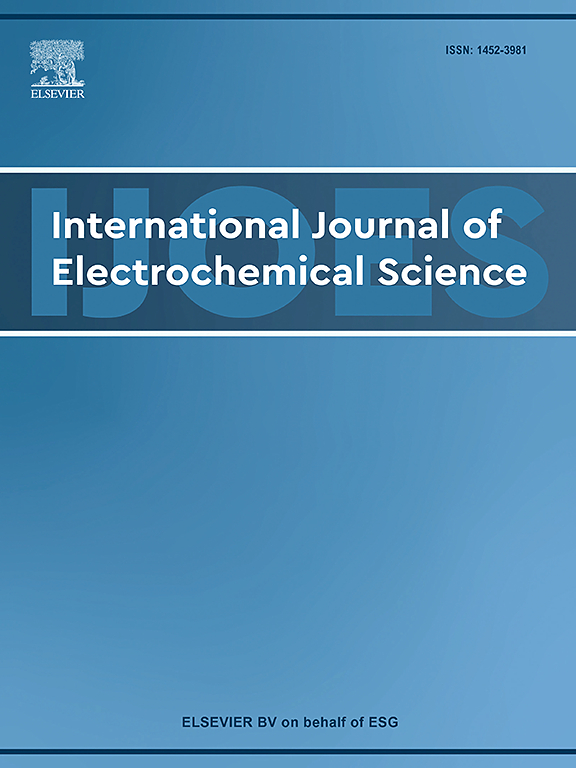Enhancing PEMFC performance through dome-like variable cross-section channels: A study on mass transfer and power density optimization
IF 1.3
4区 化学
Q4 ELECTROCHEMISTRY
International Journal of Electrochemical Science
Pub Date : 2025-01-01
DOI:10.1016/j.ijoes.2024.100920
引用次数: 0
Abstract
The structural optimization of channel embedded in bipolar plate is of great significance for improving the mass transfer and power density of proton exchange membrane fuel cell (PEMFC). In this paper, inspired by the dome-like architecture, a novel variable cross-section channel (CN-17) combining protrusions and conventional parallel channel (CPC) is proposed to enhance the performance of PEMFC. By changing the number of branch channels, a series of novel channels (DVCCs) are also designed, and the detailed performance study is conducted by a three-dimensional (3D) computational fluid dynamics model verified by the experiment data. Python code is used for calculating the rib area ratio and conducting statistical analysis of current density. It is found that CN-17 demonstrates an 8.31 % increase in maximum current density and a 7.36 % increase in maximum power density compared to CPC. It is also found that DVCCs accelerate the flow of reactive gas, promote the oxygen to enter the catalyst layer (CL), and uniform distribution of oxygen and current density at the GDL/CL interface. Furthermore, as the number of branch channels increases, the performance of PEMFC improves. The DVCC with 19 branch channels (CN-19) exhibits the best performance.
求助全文
约1分钟内获得全文
求助全文
来源期刊
CiteScore
3.00
自引率
20.00%
发文量
714
审稿时长
2.6 months
期刊介绍:
International Journal of Electrochemical Science is a peer-reviewed, open access journal that publishes original research articles, short communications as well as review articles in all areas of electrochemistry: Scope - Theoretical and Computational Electrochemistry - Processes on Electrodes - Electroanalytical Chemistry and Sensor Science - Corrosion - Electrochemical Energy Conversion and Storage - Electrochemical Engineering - Coatings - Electrochemical Synthesis - Bioelectrochemistry - Molecular Electrochemistry

 求助内容:
求助内容: 应助结果提醒方式:
应助结果提醒方式:


